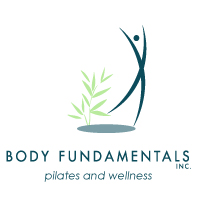Forward Equals Backwards Series #2
 By Guest Writer Diana Bailey
By Guest Writer Diana Bailey
The Guiding Principle: Consistent, Progressive Practice
Nobody builds a bridge over a big river in a day, and the same premise applies to the link between body and brain.
Balance and coordination require attentive repetition for gains to be realized. The question to keep in mind whenever approaching a new endeavor is:
Can I reverse this?
To move with efficient alignment and control carries greater value over the long-term than reactive or hurried half measures. The goal is not to complete some training exercise. It is to understand how it feels to do it. For example, sitting down is the backward part of standing up. If the body is allowed to flop into a chair, and push-off the arms to avoid the legwork of rising, trouble is on the way. Controlling the sit down will markedly improve the stand-up.
Toying with the idea of ending exactly where the movement began brings attention to support and control. It builds length, range, and economy of effort. While there may be times this is not possible, the ability to reverse a motion does more to build great body awareness than any other. It changes the intent, and redirects the mind from an incessant fascination with forward being equal to finished, mastered, or complete. Concentration on reversing builds accurate focus.
The quality of the transition dictates the state of arrival. The more seamless the transition, the more flow in the movement itself, and from one motion to another. This view changes the goal from end result to sensation and awareness. Once this key to improving balance and coordination has been turned, the body can find home in difficult circumstances. Venturing out does not mean getting lost because the agreement is to seek the center rather than finish. Fitness could be defined, after all, as the ability to “take up your space” in any direction with nimbleness and grace for as long as necessary.
At first, the body and mind must learn: How much of the self can be vitalized and recruited to retain balance? That means the activity may feel like a great deal of work.
Then, once the foundation of strength and alignment has been established, the lesson reverses: How little can I use to keep balance while concentrating on the coordination part of a challenge? Now the value of increments gains depth. It is discovered that time is part of balance; that little things become big; that everyone falls, and the real question is are you free to fall with awareness?; that relax does not mean fall apart; that letting go is for the grip of the mind.
Optimal balance and coordination invites focus, or one-pointed attention of the mind rather than detailed direction from it. The part of the brain that governs movement is distinct from the part that unravels language. Too much direction slows down learning and stifles responsive body usage. This training is a faith and letting go exercise for the brain.
It is curious or possibly even painful to discover at a critical moment that the mastery of a motion was assumed rather than actual. Reversing movements allows the connection to build with solid information about the entire process: that translates into flowing ease under “real time” pressure. The learning curve on this is individual, and the common denominator is practice. There is no substitute.
